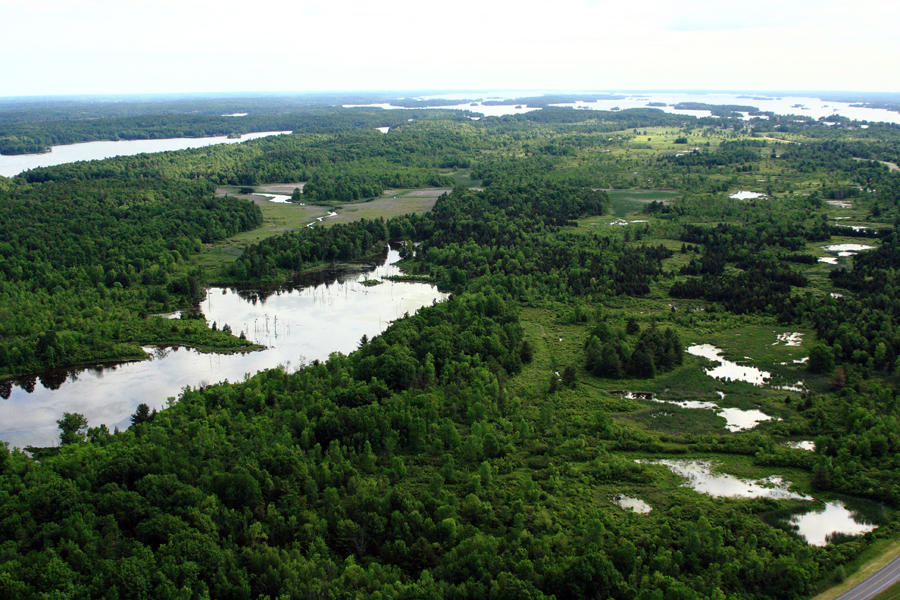By TED BOOKER
TIMES STAFF WRITER
PUBLISHED at Watertown Daily Times: FRIDAY, JANUARY 16, 2015
WELLESLEY ISLAND — With the goal of preserving the natural beauty and wildlife habitat of the area, the Thousand Islands Land Trust bought two parcels with a combined 281 acres on Wellesley Island at a bargain price of $150,000 from the McNally family.
The land conservation organization in Clayton, also known as TILT, bought the property from the Andrew McNally IV Trust of Chicago, according to Jefferson County property sales recorded Dec. 31. The sale included a 203-acre parcel on the north side of County Route 100, situated about halfway between the Thousand Islands Bridge and Thousand Islands Country Club, and a 78-acre parcel off the northwest side of Deer Point Road, which abuts the 93-acre Barnett Creek Preserve owned by TILT.
Andrew and Jeanine McNally, Chicago residents who own a seasonal home on County Route 100A on the island, had been in talks with TILT over the past four years about the sale of the property, according to Jake R. Tibbles, executive director of TILT. He said the couple and members of their extended family are longtime seasonal residents of the island. The McNally family, longtime partners in the Rand-McNally map publishing business, sold the property, which is mainly wetlands, to TILT to ensure it would be protected for future generations, he said.
“The McNally family has long-term ties to Wellesley Island, and the family has homes on the island that go back for generations,” Mr. Tibbles said Thursday. “The sale stemmed from Andrew and Jeanine McNally’s long ties and affinity to the island. That’s what sparked our long-term connection with the McNally family, and we were able to come up with a creative way of setting aside the land in perpetuity.”
The wetlands and upland forests on the land have an ecosystem with a variety of wildlife, Mr. Tibbles said. Migratory waterfowl, such as broadbills, pintails and mallards, live and breed in the area. There are also birds that are classified by the state as “threatened species,” he said, such as the least bittern and American bittern.
“A lot of the birds are coming down from lakes that are interspersed throughout the Canadian wilderness,” he said, adding that birds migrate through the area along the Atlantic Flyway migration route.
Mr. Tibbles added that the upland forests on the island are important for neotropical migrant songbirds, such as the golden-winged warbler and wood thrush.
“A lot of times those birds will use the mature canopies and tops of trees as nesting, feeding and rearing areas,” he said.
Mr. Tibbles said TILT’s mission will be to ensure the land on the island is safeguarded from development that could detract from its “natural beauty and ecological character.” While the organization plans to protect the land from residential and commercial development, he pointed out that the wetlands aren’t suitable for those purposes.
“They’re really not prime development parcels, and we’re not actively conserving those kinds of properties,” he said. “We’re looking at remote areas that are composed of mature forests, rocky outcroppings and critical wetlands.”
TILT conserves more than 8,200 acres of land in the Thousand Islands area, according to its website.
About half of it is privately owned and subject to conservation easements held by the organization, which was established in 1985.




